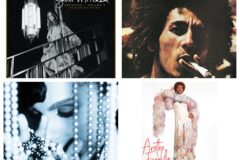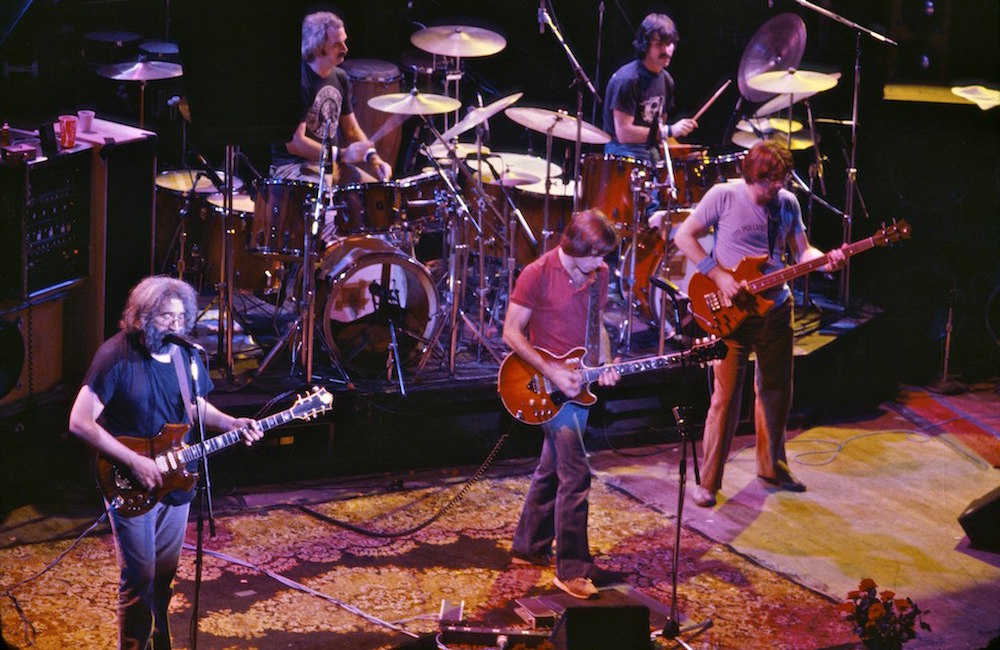There’s an easy joke to be made about Long Strange Trip, the new Grateful Dead documentary directed by Amir Bar-Lev and executive produced by Martin Scorsese, which clocks in at a couple minutes shy of four hours long. What, did they just stumble on some footage of the longest “Dark Star” performance ever and call that a movie? Given the legendary length of the band’s jams and the befuddlement they inspire in those who haven’t yet joined the Deadhead cult, the prospect of 238 minutes of Jerry Garcia and the gang is potentially daunting. At the beginning of Long Strange Trip’s fifth act, the Democratic U.S. senator and card-carrying ‘head Al Franken wonders aloud whether new fans will encounter the Dead for the first time via the film. The unspoken punchline: There’s a pretty good chance that anyone who manages to get through it is already a convert.
But if you’re a fan of the band, or if you’ve ever been curious about the Dead’s mystical appeal, Long Strange Trip is a rewarding film. Structured in six roughly chronological acts, it spans from the early ‘60s and the formation of Mother McCree’s Uptown Jug Champions, the proto-Dead folk quintet featuring Garcia and his future Dead bandmates Bob Weir and Ron “Pigpen” McKernan, to Garcia’s death from a heart attack at age 53 in 1995. After a well-received premiere at Sundance, it debuted last weekend in select theaters, with an Amazon Prime release June 2.
With deft narrative editing and new interviews with all the surviving musicians plus notable fans and members of the band’s sprawling extended family, Long Strange Trip covers every major Dead epoch: the early experiments with LSD and associations with Ken Kesey’s acid tests in late ‘60s San Francisco, the turn toward Americana and recording of the astonishing Workingman’s Dead and American Beauty albums in the early ‘70s, the years spent on the road honing what was arguably the greatest live rock show in American history, the pop-cultural explosion of “Touch of Grey” and the chaos and hedonism that followed the band in the ‘80s and ‘90s, and the slow, heartbreaking battles with illness and addiction that characterized Garcia’s final years.
Long Strange Trip’s first half is roaring fun, its second half intense and occasionally sentimental. (The screening I attended featured an intermission.) The opening hour details the Dead’s carefree early days, squabbling over chores in their Haight-Ashbury communal townhouse, and the rise to the dizzying heights of their songwriting and improvisational powers in the early ‘70s. Bar-Lev dug up a wealth of archival footage from this period, and the film provides rare new glimpses of a group whose every note was recorded and cataloged as its career progressed. A young beatnik Jerry mugs for a Super 8 camera with short hair and no gnomic beard; Bob Weir is androgynous and delicate, rehearsing harmony vocals for “Candyman” and shooting the shit with Hell’s Angels backstage.

Also Read
The Best Boxed Sets Of 2023
An early highlight of Long Strange Trip comes when Warner Bros, the Dead’s early label, asks the band to record a promotional film for its albums, in lieu of the hit single they continually failed to deliver. In an act of apparent self-sabotage, the band dosed its hired film crew with LSD, and the ensuing footage was unusable, filled with wild acid-induced zooms and jumpy in-camera edits. In one endearing shot, Jerry patiently explains to a cameraman that if he’s feeling anxious about his trip, he should walk out past the cluster of box trucks where he’s standing, to someplace where he can see the horizon. That way, his animal instincts will stop telling him to feel cornered and afraid, and he can start to tune in and enjoy the journey.
If there’s a quibble to be had with Long Strange Trip, it’s that there isn’t more of this revelatory vintage footage. In interviews, the surviving core Dead members–Weir, bassist Phil Lesh, and drummers Mickey Hart and Bill Kreutzmann–are poignant and insightful when discussing Garcia’s gifts and struggles, but they don’t talk much about themselves, or about each other. Conflicts between band members are glanced at but not addressed directly, leaving you to wonder about the interpersonal dynamics behind the music. In footage from the American Beauty sessions, Jerry and Phil hector Bob for singing out of tune. One interviewee wonders whether the alcoholism that preceded Pigpen’s death in ‘73 had anything to do with the band’s gradual move away from the meat-and-potatoes blues improvisations that were his musical forte.
There’s a lot more to the story of the Dead than Jerry and the “core four,” however, and as the documentary goes on, seemingly secondary characters emerge as stars of the show. Sam Cutler, who served as the Dead’s tour manager from ‘70-’74, is a grizzled and hilarious rock’n’roll sage, driving through Brooklyn and smoking cigarettes by the shore of the East River, dispensing nuggets of road wisdom. Barbara Brigid Meier, who was Garcia’s girlfriend in the early ‘60s and again in the early ‘90s, speaks with devastating candor about their long, strange relationship. We learn that Senator Franken has strong opinions about the ‘80s Dead masterpiece “Althea”; his favorite is a loping version from 5/16/80 at the Nassau Coliseum. Grateful Dead lyricist turned early Wired writer and internet evangelist John Perry Barlow drives to Pigpen’s cemetery, Bluetooth headset in his ear and Red Bull in his hand, wondering why fans would leave guitar picks on the grave of a keyboard player.
Throughout Long Strange Trip, the film’s extras and principal players utter one word over and over: fun. For Garcia, having fun was a sacred thing, perhaps the fundamental precept of his life. It meant lots of drugs and music, yes, but also something deeper. Fun was “a diminutive way of saying something other people might try to enshrine in much loftier terms,” Weir says in an interview. It was a commitment to improvisation, in music and in life, to accept each situation on its own terms and react accordingly, to hit the right notes and move on to the next jam without looking forward or back. As the decades wore on and the parties at Dead shows grew bigger and bigger, Garcia withdrew into heroin and himself, imprisoned in a series of strange hotel rooms on an endless tour. Rendered wraithlike and miserable, he steadfastly refused to stop the Grateful Dead train or alter its course. He wanted to follow the tracks and continue providing for the dozens of people who relied on the Dead for a paycheck, even as the psychedelic propulsion of the band’s early years hardened into dull inertia. If having fun was Jerry Garcia’s salvation, Long Strange Trip suggests it was also his undoing. But it was no small accomplishment to go so far with such a simple guiding maxim.




